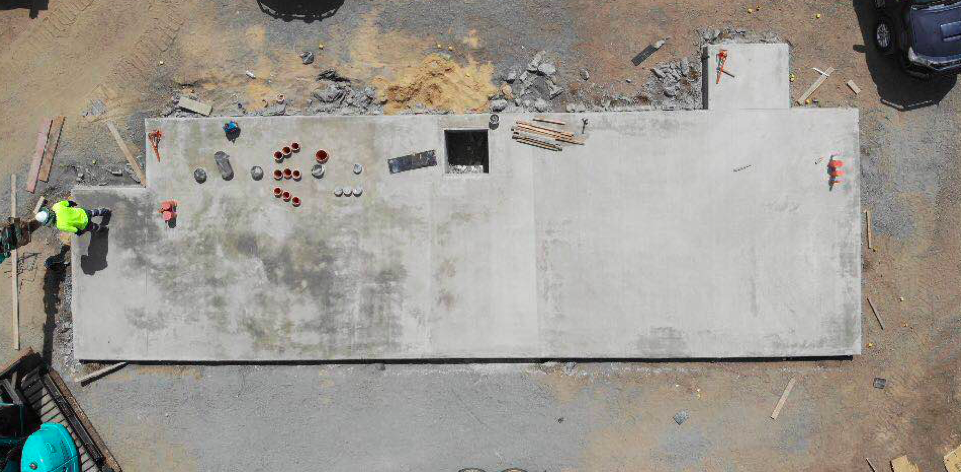UNSW researchers plan to deploy a large-scale storage system that will harness the benefits of two complementary technologies: lithium-ion batteries and hydrogen fuel cells. The project was first revealed last week at an event to announce Australia’s first fully integrated smart city trial based on Internet of Things technologies, in a partnership involving UNSW Sydney, Providence Asset Group and Tamworth City Council.
Thus far, not much is known about the battery chemistries and inner workings of the system. Joe Dong, director of the UNSW Digital Futures Grid Institute, told pv magazine that the technology will be patented by the university. “There may be individual technologies elsewhere, but we have an integrated package,” he said.
Dong explained that the hydrogen component of the system will provide “baseload-type” storage support, while the li-ion system will offer real-time support. The main advantage of the system will be “better utilisation of the specific characteristics of each type, aiming for overall optimal — technically and economically — firming for solar farms,” he said.
Dong and his team are working together on the project with researchers from the University of Technology Sydney, with Providence Asset Group as lead applicant. Financial support from the Sydney-based green investment outfit is an extension of the $3.5 million of funding that the UNSW and H2Store recently secured to develop residential hydrogen storage technologies.
The hybrid energy storage system will use artificial intelligence to manage and smooth out the intermittency of renewable energy, balance out supply and demand, and allow the use of excess renewable energy where and when needed. It will be tested on 5 MW solar farms, according to Providence Asset Group’s website. Once the trials are complete, a 35-40 MW battery will be installed at the 121 MW Yarranlea Solar Farm in the Darling Downs region of Queensland, within three years of the plant being commissioned.
According to the latest update from Chinese PV module maker Risen Energy, the Yarranlea project was approaching the module installation stage in late February. Construction commenced in May 2018 and will be completed this October. When the company revealed that it had acquired the project from Yarranlea Solar Pty Ltd in February 2018, it said it planned to operate it entirely on a merchant basis.
Risen Energy is tapping local construction companies and service providers to work on Yarranlea and its second Australian project, the 132 MW Merredin Solar Farm in Western Australia, which broke ground last month. The two installations are part of the Chinese company’s ambitious plans to acquire over 2 GW of projects in Australia.
The large-scale hybrid energy storage system and AI-based controls could provide a continuous, reliable supply of solar energy, while ensuring the safe, efficient transport and storage of hydrogen. The Australian-made technologies are expected to create economic value well in excess of the project investment, according to Providence Asset Group.
“We are delighted to be recognised by UNSW and for their strong support. Providence realises Australia has global leading universities and talents,” Providence Asset CEO Henry Sun said at the event last week. “We want to bridge them with industry. On the other side, we are collaborating with world class partners in the renewable field such as Risen Energy and [Chinese inverter maker] Sungrow Power.”
Other Australian hybrids
While the combination of two complementary technologies offers an attractive prospect for firming up intermittent renewable generation, there are only a few hybrid energy storage systems currently in operation across the globe.
In Australia, Victoria’s Monash University has installed the nation’s largest commercial behind-the-meter battery storage system as part of a microgrid that will cover 100% of its electricity needs with renewable energy. The 1 MWh hybrid system combines a 180kW/900kWh vanadium redox flow battery system and a 120kW/120kWh C1-rated lithium-ion battery. As U.K. vanadium flow battery manufacturer RedT explained after it installed the system in 2018, the vanadium-flow “workhorse” provides around 80% of the energy and has the ability to store energy for more than four hours, while the lithium-ion batteries provide bursts of power for demand surges. The lithium-ion battery, supplied by Germany’s Tesvolt, uses Samsung cells and can store energy for one to two hours.
Ecoult, meanwhile, is an active hybrid energy storage system provider. The company was established in 2007 by the Commonwealth Scientific and Industrial Research Organisation (CSIRO) as a vehicle to develop and commercialize UltraBattery, a hybrid lead-acid battery and carbon ultracapacitor it invented. Oil and gas producer Santos is using Ecoult’s systems in a PV-powered trial to replace diesel generators for pumps that continuously deliver oil from below the ground. Early signs of success suggest that the trial will serve as a test case for deployment at thousands of oil-production sites in Australia, in addition to other offgrid applications.
This content is protected by copyright and may not be reused. If you want to cooperate with us and would like to reuse some of our content, please contact: editors@pv-magazine.com.









3 comments
By submitting this form you agree to pv magazine using your data for the purposes of publishing your comment.
Your personal data will only be disclosed or otherwise transmitted to third parties for the purposes of spam filtering or if this is necessary for technical maintenance of the website. Any other transfer to third parties will not take place unless this is justified on the basis of applicable data protection regulations or if pv magazine is legally obliged to do so.
You may revoke this consent at any time with effect for the future, in which case your personal data will be deleted immediately. Otherwise, your data will be deleted if pv magazine has processed your request or the purpose of data storage is fulfilled.
Further information on data privacy can be found in our Data Protection Policy.